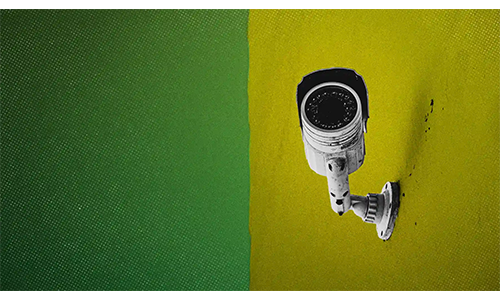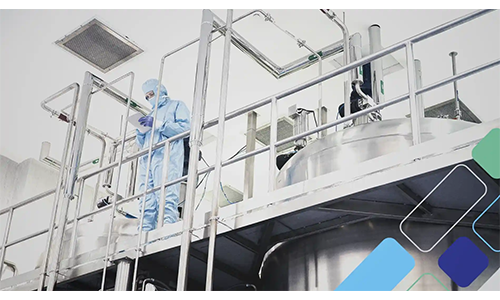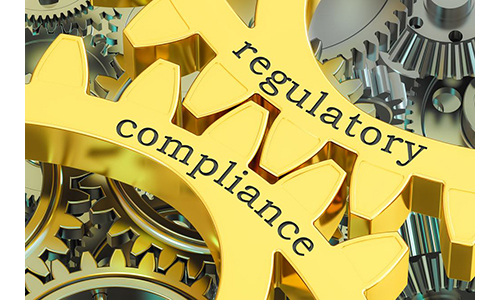Companies don’t want to be a pain in employees’ necks. Or, for that matter, for their employees to have pains in their necks, backs, arms or feet.
But unfortunately, musculoskeletal disorders (MSDs) are an incredibly common part of the job. About 1.8 million workers report MSDs each year, and about 600,000 of those workers take time off as a result. It’s a costly problem, but it’s one with known solutions, which is perhaps what makes the prevalence of MSDs that much more concerning.
Addressing MSDs involves tackling the underlying issues that lead to those injuries in the first place. It’s not easy. Implementing an effective ergonomics program takes trust, buy-in and commitment. Still, the efforts are worth the results, says Wendy Mayes, EHS administrator at Hallmark Cards.
Mayes will be speaking at the Safety Leadership Conference, being held from September 18-20 in Orlando, Florida, about how Hallmark’s work with GSC On-Site, an ergonomics consulting service, has helped to reduce MSDs and advance their safety program.
More information about the conference, including registration, can be found at www.safetyleadershipconference.com. Below is a preview of what to expect from Mayes’ presentation.
EHS Today: How does workplace culture affect employee safety and well-being?
If the culture only focuses on production numbers, the workforce will achieve that target—and it might do so by sacrificing something else. If the culture demonstrates, enables and establishes the expectation to follow the rules and be actively engaged, most employees get on board. If there is no clear path made for people, the path of least resistance is usually the one taken.
In your experiences, what needs to change at the frontline to reduce MSDs? What about at the C-suite?
In my opinion, the biggest issues are we don’t understand our bodies and aren’t motivated to make changes until we have run out of all other options. We didn’t get a body owner’s manual, and there are innumerable methods and theories online of what you should do to be healthy.
Most of us go along living life until we hurt. Rather than assess what or how we are doing things, we simply take Tylenol and keep repeating the same thing, expecting change. Even after being educated about ergonomics, posture or correct lifting, we are still sore and doing things the way we’ve always done them.
The biggest impact I’ve seen is when someone gets one-on-one coaching about their methods. They finally can see themselves and what action is at the root of their pain. When they start working on that one change, they see improvements they did not think were possible.
Leadership, or the C-suite, can help by providing the resources for this type of approach and realize what they focus on, speak about and measure is establishing the drivers for the workplace culture. Training, body conditioning, creating and aligning procedures, observations and coaching, and early intervention methods are investments in the culture—and in each employee.
Once ergonomics programs are in place and MSDs decline, what other changes have you noticed in employees, workplace culture and the company at large? If any of these changes surprised you, please explain how.
We had an ergonomics program, but we learned it was not effective at changing behaviors. After working with GSC On-Site and learning more about our work methods, how our bodies function, and what trends were appearing, we could target specific workplace ergonomics.
This enlightened our ergonomics team, who then changed how we trained, what we observed, and how to promote Best Known Methods (BKMs) to connect work systems across the board.
Having a resource to help people one-on-one increased their willingness to report and bring ideas of how to change work methods. More people want to be on safety teams, become trainers or leaders, and submit ideas.
We have even seen that footwear has changed to more supportive shoes based on training and word of mouth about reduced foot pain. This spurred a footwear allotment to new hires to obtain a good shoe and to start work on the right foot. We’ve seen an increase in productivity, more willingness to change, and a belief that the workplace can be a source of help—and not only viewed as the source of pain.
It seems like ergonomics has been in the zeitgeist recently. If you agree, what do you think are some reasons why?Ergonomics has always been a moving target, a mystical creature lurking in the workplace causing so many injuries but can’t be tamed by one method. It’s like finding the perfect temperature to please everyone.
We have come a long way in improving equipment hazards: new equipment, design standards and regulations have reduced injuries and saved lives. Behavior and work methods are harder to control, since these are up to each individual to make the best choice, and these injury trends become more and more noticeable as others decline.
You can have the right tool and use it incorrectly or choose not to use it. When your body is that tool, and you haven’t had training on how to use it correctly, you will be sore. People who are sore want to know why, so online search engines abound with media about ergonomics and exercises. The information is there, but properly applying it and sustaining it is a different animal.
It's easy to brush off aches and pains because we assume they're part of life. Why is it important that people speak up about their injuries and discomfort?
Without evaluating why we are hurting, we won’t be able to tackle the root cause. We can find temporary relief, we can even have therapy or surgery, but if we continue to do the same things that created the problem, we are doomed to repeat history.
A lot of the workplace soreness we’ve seen doesn’t just “go away.” It grows, does a roller coaster of better/worse, or another body part starts taking on the burden and gets injured. After all that waiting, there are multiple body systems out of balance, overworked, underworked, and it takes time to get back into harmony. At that point, the person is tired of being in pain for so long and wants relief now because they can no longer work.
The earlier we know, the quicker the interventions work. We can identify poor habits or work methods and correct them. It also helps us identify if there is a growing trend to educate the whole workforce about or create a new work method.
Why is it important for companies to address ergonomics concerns and not brush them aside?
Many ergonomic concerns are overwhelming or have no perfect solution. As you scan the work floor, you think that people must walk or stand, or they must bend or lift. How can I eliminate that? That would be eliminating the job.
Start with the things you can work on. Choose the ones that are causing the biggest impact and start problem-solving, trying different things. Pick a few best methods to focus on, and get your workforce involved; they will offer up ideas you didn’t think about.
Work culture throws us a curve ball: what works in one facility or department might not work in another. A big surge of safety concerns could indicate there are other culture issues going on—and the real cause might not be safety-related at all.
When people are hurting and the workforce, including leaders, just think this is a part of work, there is a hopelessness that sets in. Everyone just gives up because it’s too big of a beast to battle. When you target one goal, the workforce gains a victory to build upon.
Musculoskeletal disorders have been a problem for many years. Why and how did Hallmark decide to tackle them?
We have been working for decades on it. I’ve had the privilege to work at different locations, and each location has different programs. When starting at this location, I looked at the history of all the problems and efforts made. It looked like we were doing all the right things but not seeing the results. The same problems listed 10 years ago would be the same problems I’d list today. We had to change our approach.
As an EHS professional, I know some basic ergonomics but not enough to offer specific one-on-one coaching. We needed help to be proactive, to identify and change behavior/work methods, and keep it simple. My team of volunteer employees aren’t going to be able to calculate the NIOSH lifting equation for someone picking up a card. Even if they could, it wouldn’t help us find the best posture to select that product. Teaming up with GSC On-Site gave us access to someone who knows body mechanics. That opened the door to improvement opportunities we would never have known to explore.
What's one thing you hope attendees learn from your session at the Safety Leadership Conference?
The little, focused steps you can take will impact more than you’d expect for your employees, your safety system and your workplace culture. There is no one-size-fits-all solution, but you can discover what works for your culture as it changes by involving people in the process. And when people see good results, they become witnesses and positive influencers of the culture.




















































































